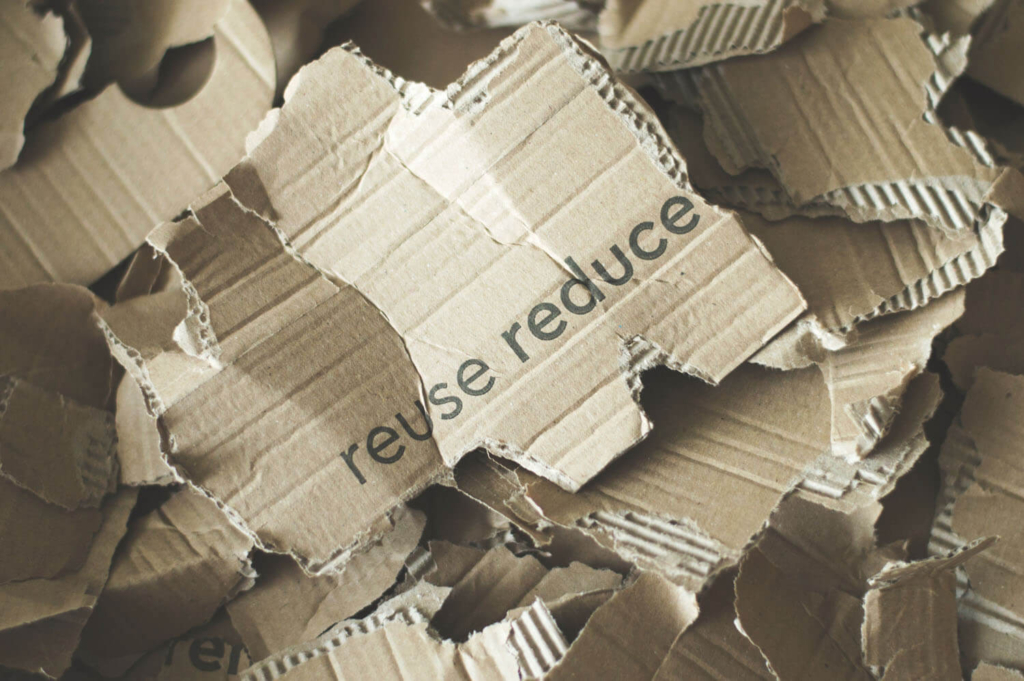Our modern lifestyles come with a heavy carbon footprint. And in a world of quickly depleting natural resources – at a rate which isn’t slowing down – embracing a sustainable way of living is a necessity, one that requires a complete change in mentality. Surprisingly, changing our entire way of thinking is not that difficult, and definitely much easier than knowing about the entire supply chain of every product we buy.
Much has been said about the benefits of a sustainable lifestyle. Going green makes us healthier and happier. It makes us more productive, saves us money and improves our quality of life. But above all, it gives us an active role in protecting our surroundings – it provides meaning and purpose.


As complicated as it may sound, especially to anyone just starting to grapple with the idea, sustainable living boils down to one simple principle: Make smarter choices to consume less and reduce waste. When we look at our lifestyles through this lens, it’s easy to make the right decisions; and whenever we can’t, we can at least be aware of our impact and work to reduce it in the future.
Switching is easier and more convenient than you may think – as easy as 1-2-3, in fact. We’ve put together three simply ways to help translate our one-principle approach into your daily life, and get you on the easy path to greener living.
1. Minimise Waste
Reducing waste is the low-hanging fruit of sustainable living: We can do it immediately, in so many areas of our lives and with minimal effort. Start by reducing energy waste: Use LED light bulbs, switch lights off when not needed and get remote-controlled electrical outlets to avoid standby consumption (yes, that includes all of your 57 chargers). Don’t forget about the energy required to move yourself and your purchases around; buy local goods and foods whenever possible, and carpool or cycle instead of driving.
Then, move on to cutting water waste: Take shorter showers, turn off the water while lathering (or brushing your teeth), install low-flow shower heads and faucet aerators, and run dishwashers and washing machines only with full loads.
Finally, reduce physical waste: Selling, donating and repurposing what we don’t use; recycling, composting, avoiding disposables (anything that’s single-use, such as plastic straws and cups, disposable razors, non-rechargeable batteries, non-refillable pens, etc.) and opting for products with less (or recycled) packaging are all valid strategies that we can put in place right away with minimal effort and planning.
2. Consume Less
“Don’t take more than you need” is a core value in many ancient indigenous cultures around the world, and it’s wise advice for preserving our natural resources. Following this advice is as simple as asking ourselves whether we really need something before buying it, and reflecting – even for just a few seconds – on the real reasons that drive our purchases. (Get our tips on being a sustainable stylista here.)
It also helps to remember that we live in a sharing economy: We can borrow (ever heard of tool libraries?) and buy second-hand items more easily than ever before. And when all else fails, we can make a conscious decision to purchase durable products that will last as long as possible (and which we can sell when we stop needing them).
3. Scale Up
Once you gain some momentum, you won’t be able to look at the world the same way anymore. The next natural step is to scale up your environmental efforts to further reduce your carbon footprint. For instance, by planning our meals in advance to avoid buying processed, packaged foods. Or by consuming less meat and dairy, as livestock farming produces, on a global scale, 14.5% of all greenhouse gases. There’s no need to be drastic about it: Try eating vegetarian (or even vegan) two or three days a week for a month and see how you feel. As a general rule, it’s good to avoid unnecessary animal-derived ingredients whenever possible. Be aware that they are even found in many cosmetics.
From there, you can set up long-term plans to improve the energy efficiency of your home, for instance with better insulation or smart home systems. You can transition to natural cleaning products (such as citric acid and vinegar) to avoid chemical ones, which have now become “substantial sources of urban air pollution”. You can even think about selling your car if you live in an urban area; many cities, such as Madrid, Oslo, Paris and Copenhagen, are actually beginning to ban cars from their city centres.
Taking it a step further, implementing green initiatives at the office can be a great team-building activity as well as an interesting PR opportunity for employers: a decisive win-win.
Finally, getting active in your neighbourhood to implement sustainable initiatives will allow you to lead by example, becoming a positive voice for change to transform our cities and our planet.
For more information on small ways you can make big changes, check out resources at worldwatch.org, wwf.org and and globalstewards.org.














Sorry, the comment form is closed at this time.